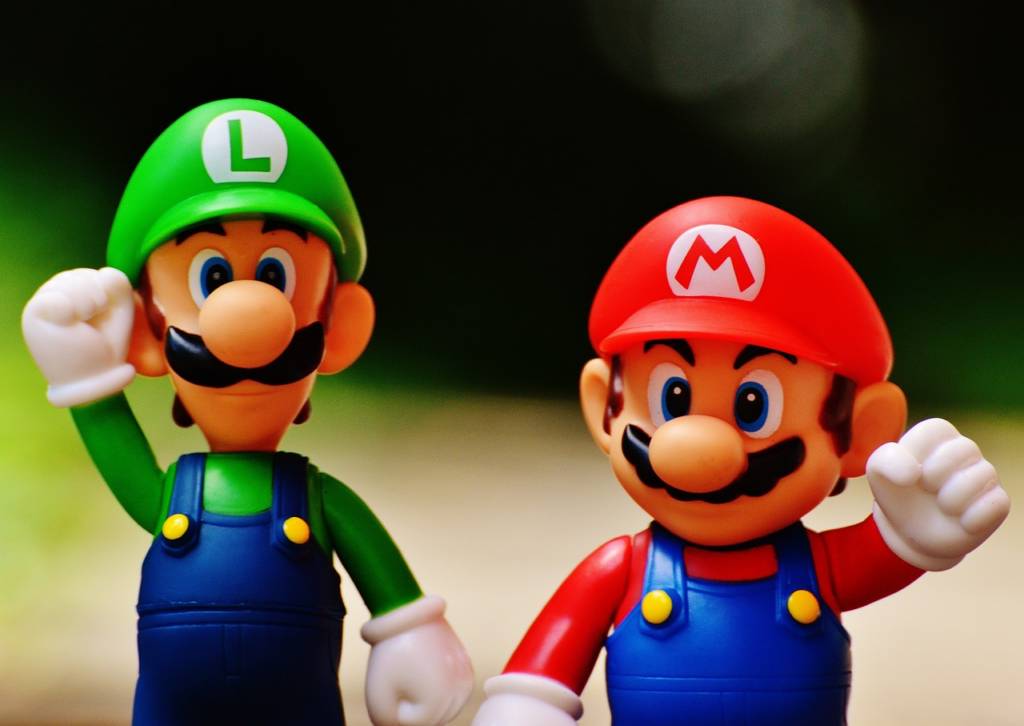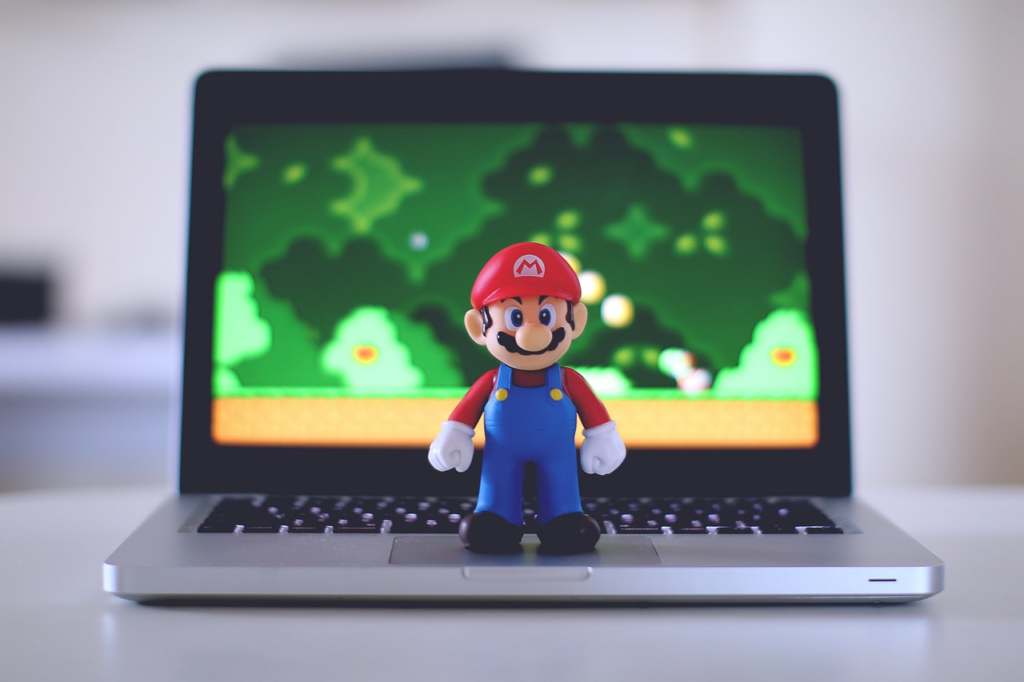Advertisement
If there's one character who transcends generations and continues to enchant gamers of all ages, it's Super Mario. Created by Nintendo, Mario is more than just a video game icon; he is a cultural figure, a symbol of digital entertainment who has captivated the world since his first appearance in 1981.
The story of Super Mario
The origins of Super Mario go back to the beginning of the video game era, in the 1980s, when the industry was still in its early stages of development. It was against this backdrop that Nintendo, a Japanese company then known mainly for making playing cards and toys, decided to enter the video game market.
Advertisement
The story of Super Mario begins with the development of a game called "Donkey Kong" in 1981. Created by legendary game designer Shigeru Miyamoto, "Donkey Kong" was one of the first platform games and one of the first to feature a recognizable protagonist. However, at the time, the main character still didn't have a defined name and was simply called "Jumpman".
"Donkey Kong" featured simple but challenging gameplay, where players controlled Jumpman as he tried to rescue a damsel in distress from the clutches of an enraged gorilla called Donkey Kong. The game was a huge success in arcades, helping to establish Nintendo as a force to be reckoned with in the electronic games industry.
Advertisement

It was during the development of "Donkey Kong" that the Jumpman character was given his most famous name: Mario. The name was inspired by Mario Segale, an Italian-American warehouse owner who had done business with Nintendo. Since then, Mario has become the face of the company and one of the most iconic characters in pop culture.
Origins
Super Mario's origins are rooted in an era of experimentation and innovation in the video games industry. The initial success of "Donkey Kong" and the subsequent evolution of the "Super Mario Bros." series demonstrate not only Nintendo's ability to create engaging games, but also Mario's ability to transcend the boundaries of the virtual world and become an enduring cultural icon.
Since then, the plumber with the red moustache and blue overalls has been synonymous with fun and adventure for millions of gamers around the world.
The leap to stardom: Super Mario Bros.
The release of Super Mario Bros. in 1985 was truly revolutionary for the video game industry and popular culture as a whole. This game not only solidified Mario's position as Nintendo's mascot, but also established many of the fundamental elements that would become standard in platform games.
In Super Mario Bros., players take on the role of Mario, or his brother Luigi in two-player mode, as they embark on a journey to rescue Princess Peach from the clutches of the villainous Bowser in the Mushroom Kingdom. The game was one of the first to feature side-scrolling mechanics, where players advance through horizontal levels while the screen moves automatically.
In addition, Super Mario Bros. introduced a variety of gameplay elements that would become hallmarks of the series. This included iconic power-ups such as the Super Mushroom, which transformed Mario into Super Mario, allowing him to grow in size and survive a single blow from enemies; the Fire Flower, which granted the ability to throw fireballs; and the Star, which made Mario temporarily invincible.
These power-ups added a layer of strategy and variety to the gameplay, making the gaming experience even more exciting and rewarding.
Continuous evolution: New adventures and innovations
The continuous evolution of Super Mario is a testament to Nintendo's ability to innovate and adapt to the demands of gamers over the decades. Since the release of "Super Mario Bros.", the Mario franchise has seen countless new adventures and innovations that have helped keep it relevant and exciting for fans of all ages.
One of the biggest innovations in the Mario series came with the release of "Super Mario Bros. 3" for the NES in 1988. This game introduced new power-ups, such as the Tanooki Cloak, which allowed Mario to fly for short periods of time, and the Raccoon Suit, which granted the ability to glide and fly.
In addition, "Super Mario Bros. 3" featured a non-linear world map, allowing players to choose their own path through the different levels and worlds. These additions significantly expanded the gameplay and gave players a sense of freedom and exploration never before seen in the series.
The release of "Super Mario World" for the Super Nintendo in 1990 also brought with it a number of innovations. This game introduced the dinosaur Yoshi, a character who would become a fan favorite and a recurring element in many future Mario games. In addition, "Super Mario World" featured more advanced graphics and a memorable soundtrack, taking the gaming experience to new heights.

As technology advanced, Nintendo continued to explore new ideas and concepts in the Mario series. "Super Mario 64", released for the Nintendo 64 in 1996, was a milestone in video game history, being one of the first successful 3D platform games. This revolutionary game allowed players to explore vast 3D environments while embarking on an epic quest to rescue Princess Peach from Bowser's castle. "Super Mario 64" set the standard for 3D platform games and inspired countless other series to follow suit.
Since then, the Mario series has continued to evolve and expand on a variety of platforms, including the Nintendo GameCube, Wii, Wii U, Nintendo Switch and mobile devices. From racing games like "Mario Kart" to party games like "Mario Party", the Mario franchise covers a wide range of genres and gaming experiences.
Super Mario's lasting legacy
Super Mario's lasting legacy transcends the world of video games and extends deep into pop culture. Since its initial release in 1985, Super Mario has become a globally recognized icon and a symbol of fun, adventure and nostalgia for people of all ages.
One of the reasons Super Mario has achieved such an enduring legacy is its ability to adapt and evolve with the times. Over the decades, Nintendo has continued to release new games and experiences that have kept the franchise relevant and exciting for each generation of players. From classic platformers to racing games, party games and spin-offs, the diversity of games within the Mario series has allowed it to reach a wide and diverse audience.
What's more, Super Mario has transcended video games and become a cultural phenomenon. Mario and his friends have appeared in cartoons, comics, films, licensed products and even theme parks. Mario's smiling face is instantly recognizable the world over, and his influence can be seen in all forms of media and entertainment.
Another fundamental aspect of Super Mario's legacy is its impact on the video games industry as a whole. The Mario games established many of the standards and conventions that are now considered fundamental to the platform genre. From the precise jumping mechanics to the notion of exploring vast, colorful worlds, Super Mario inspired countless developers to create their own games and franchises.
What's more, Super Mario's legacy is evident in the fans' continued love and devotion. From cosplays to fan art and dedicated online communities, Mario fans show their support and passion for the franchise in a variety of ways. The nostalgia associated with classic Mario games also plays an important role, with many players returning to their favorite childhood games to relive the happy memories of the past.
How old are Mario and Luigi?
Although the exact age of Mario and Luigi has never been officially confirmed by Nintendo, we can make some assumptions based on available information about their history and chronology.
Mario and Luigi are often portrayed as Italian plumbers and brothers, with Mario being the older of the two. Considering that the Super Mario Bros. series was first released in 1985, and taking into account that the characters were already young adults at the time, it's reasonable to assume that they were conceived as being around 20 years old at the time of the first game.
Given that the Super Mario Bros. series has been around for more than three decades and that the characters don't seem to have aged substantially over that period in the main games, we can assume that Mario and Luigi remain in the young adult or middle-aged age group. This would mean that they are probably between 30 and 40 years old within the chronology of the Mario universe.
How many Mario's do you have?
There are basically three main characters in the Super Mario series: Mario, Luigi (Mario's brother) and Princess Peach. In addition, there are other recurring characters such as Bowser (the main antagonist), Toad (Princess Peach's assistant) and Yoshi (Mario's dinosaur companion). These are the central characters who appear in many of the main games in the series.
Alternative or variant versions
Within the games in the Super Mario series, there are sometimes variations or alternative versions of Mario. For example, there is Mario Metallic and Mario Tanooki in "Super Mario 64", as well as different forms of Mario, such as Mario Fire, Mario Tanooki, among others, in later games. However, these variations are generally representations of the same main character, Mario, with special abilities or characteristics.
Games and Specific Appearances
Mario also appears in a variety of games and spin-offs that are not necessarily part of the main Super Mario series. For example, he is the main character in racing games such as "Mario Kart", sports games such as "Mario Tennis" and "Mario Golf", and in many other titles that explore different genres and game mechanics.
What is the name of the video game Super Mario?
The main video game in the series is entitled "Super Mario Bros." This is the title that kicked off the franchise and set the standards for platform games. Since then, the Super Mario series has expanded to include numerous other titles, including direct sequels, spin-offs and games in a variety of genres, but "Super Mario Bros." remains the series' inaugural and most iconic title.
Nintendo is one of the most prominent and influential companies in the video games industry. Founded in 1889 in Kyoto, Japan, initially as a playing card manufacturer, Nintendo underwent several transformations throughout its history before becoming the video game giant we know today.

The turn towards video games began in the 1970s, when Nintendo began to explore this emerging market. Its first significant success in video games came with the launch of the Nintendo Entertainment System (NES) console in 1983 in Japan and 1985 in the United States. The NES and its games, particularly "Super Mario Bros.", helped revive the video game industry after the console crisis of 1983 and established Nintendo as a dominant force in the market.
Nintendo is known for its iconic game franchises, with Super Mario, The Legend of Zelda, Pokémon and Metroid being some of the most notable. These franchises have not only won over legions of fans over the years, but have also helped set the standards for their respective genres.
A classic for all generations
The story of Super Mario is an incredible journey of creativity, innovation and fun. From his humble beginnings in arcades to his status as one of pop culture's most recognizable characters, Mario continues to captivate and inspire generations of gamers.
With new games and exciting experiences on the horizon, it's safe to say that the Super Mario legacy will continue to shine for many years to come. So grab your red cap, grab your favorite mushroom and join Mario on his next epic adventure!
See also: Motion Sensor: 10 game options for exercising at home
March 29, 2024

She has a degree in Languages - Portuguese/English, and is the creator of the Escritora de Sucesso website. As a writer, she seeks to expand everyone's knowledge with relevant information on various subjects. At SoMuchToSayToday, she brings news and content ranging from entertainment to the country's economic situation.


